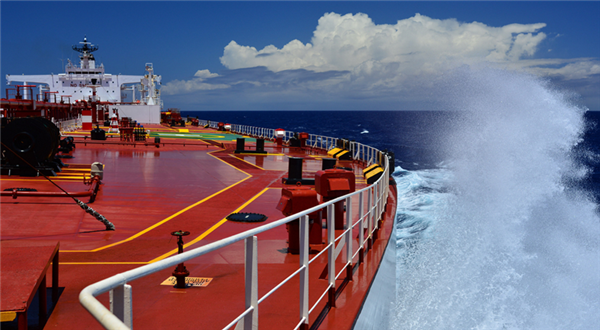Floating storage at record levels as tanks fill up on land
Shipowners profit as chaos in oil market leaves traders with distressed and unsold cargoes
CRUDE stored on tankers surged to a record 163m barrels after a volatile week in global oil markets left traders and refiners scrambling to offload surplus oil.
Some 114 tankers, including 59 very large crude carriers, are now deployed for floating storage for the week ending April 24, the most in records dating from 2009, according to data from Lloyd’s List Intelligence.
Volumes have gained 37% in two months as the coronavirus pandemic cut global crude consumption by a third, depressing oil prices to the lowest in more than 20 years and overwhelming land-based storage capacity.

Floating storage is defined as any tanker actively trading that has been at anchor or not moving for 20 days or more.
The data has yet to reflect widespread discharge delays at ports because of shrinking land-based storage capacity, extended tanker voyages around the Cape of Good Hope, and greater volumes of distressed cargoes that remain unsold on vessels at anchor.
The Lloyd’s List Intelligence floating storage data is also inflated by some 45-plus cargoes of Iranian crude, stored by National Iranian Tanker Co.
These tankers are unable to trade because of US sanctions. When removed from the tally, volumes in floating storage total some 76m barrels, data shows.
Floating storage is likely to soar well above these volumes in coming weeks as tanks fill up shoreside and the contango in the oil price widens. Time charters for periods ranging from three months to 12 months has accelerated with tankers expected to be used for storage leading into the northern hemisphere summer.
“Not all time charters are being done with storage options, but many have some type of element for storage which is not being exercised at the moment,” London-based Rebecca Galanopoulos Jones from Alibra Shipping told Lloyd’s List.
“The focus is on time charters for three to six months, just to keep a focus until the summer and then see what will happen.”
The chaos and volatility in oil markets translated to an unexpected rate rally for both clean and dirty tankers over March and April that is now extending to May.
Despite the unprecedented collapse in demand, exports of crude and refined products have remained steady, at the same time as traders seek to secure tonnage for floating storage charters.

Clean tanker spot earnings reached record levels this week above $150,000 daily for long range two tankers, and nearly $90,000 daily for medium-range tankers according to assessments from London bourse, the Baltic Exchange.
Six-month time charter rates for suezmax tankers are now benchmarked at $55,000 daily, and above $85,000 daily for VLCCs, more than double figures at the start of 2020.
“Considering that more cargoes already on the water are struggling to find buyers, clean and dirty tankers are being forced to anchor off major refining and consuming regions and wait on costly demurrage,” Alphatanker said in a report published this week.
Build-ups are seen for North Sea and Russian Urals in northwest Europe, West African, Russian and US barrels in the Mediterranean, as well as domestic grades off West Africa, according to the research arm of Paris-based shipbroker BRS.
VLCCs chartered by Saudi shipowner Bahri have also waited up to three weeks off the Sumed pipeline at Ain Sukhna, Egypt, because of storage issues, vessel-tracking data show.
US Gulf-loaded medium-range tankers laden with gasoline are also delayed discharging on the east coast of Mexico because land-based storage is at capacity. Floating storage is also rising along the US West Coast as a shortage of commercial tanks there prevents tankers discharging crude cargoes.
Alphatanker estimates that floating storage will peak in late May or early June. The US Gulf will become a further storage hub for stranded tankers, the report said.
Some 19 VLCCs laden with Saudi crude are now sailing for the region and anticipated to arrive during May, for which buyers are unlikely. At the same time as demand for gasoline and other transport fuels has fallen to 29-year lows in the US, as refinery utilisation plunged 22% in a week to 68%, according to the US Energy Information Administration. That is the lowest on record going back to 1990.
Oil traders are also taking tonnage for contango plays, profiting when the spot price is lower than the future price. That allows crude to be bought and stored for sale at a later date. Based on the current spread in Brent crude, traders can make a profit of about $3.1m for a six-months storage play, and as much as $17.1m for a 12-month period, excluding cost of carry.




